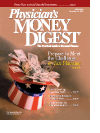Publication
Article
Physician's Money Digest
Balanced Funds Aren't Always Balanced
Author(s):
Several years of market uncertaintyhave left physician-investors wonderinghow they can bring somestability back to their portfolio. Manyhave turned to balanced mutual funds.According to AMG Data Services, inflowsinto balanced funds for the second quarterof 2003 totaled $5.90 billion—a 28%increase from the comparable period in2002. But just how "balanced" aretoday's balanced funds?
Not So Balanced
New York Times
Balanced funds hold 30% to 40% oftheir portfolios in bonds and 60% to70% in stocks. According to a recent report, however, thetype and quality of stocks and bondsvary widely from fund to fund.Jonathan Murray, senior vice presidentfor investments at Legg Mason WoodWalker, says that in addition to lookingat manager tenure and historical returns,you have to be sure to factor ininterest rate movements and the manager'sability to shift between differentstock and bond allocations.
Some of today's balanced funds areconsiderably more aggressive than theyonce were. For example, the funds traditionallyapportioned most of theirequity holdings to large cap valuestocks and most of their fixed-incomeholdings to short- and intermediate-termUS Treasuries. Because the fundswere conservative and diversified, financialadvisors recommended them toretirees and young investors with limitedcapital. But the category's leader thisyear, Green Century Balanced, has 70%of its portfolio in stocks, predominantlysmall cap, and 30% in bonds, mainlyjunk bonds. Up 34.2% through the secondquarter 2003, this fund invests onlyin companies that are committed toenvironmental improvement.
Effective Evaluating
A more effective way to gauge a fundis to look at its 5- or 10-year performance.The research department at Legg Masonrecommends Dodge & Cox Balanced,which has a 10-year annualized return of11.8%; American Balanced, with a 10-yearannualized return of 10.5%; and MFSTotal Return, with a 10-year annualizedreturn of 9.4%. Financial advisors notethat the Dodge & Cox Balanced fund issimilar to the traditional balanced fund.
Times
In the article, Dodge & Cox chiefinvestment officer John Gunn explainsthat the company's typical balanced fundinvestor should be someone comfortablewith a narrow range of long-term returns.He notes that the income and equitiescomprising the fund have a long-termtime horizon with low turnover, makingthe fund a good choice for someone wishingto avoid the potentially wide swingsof a straight equity portfolio.
Many financial advisors say investorsshouldn't have to sort through the variousfunds; rather, balanced funds shouldavoid riskier stocks and debt entirely.Erika Safran, principal at the FinancialAsset Management Corporation, says it'simportant to realize how misleading thebalanced fund category can be. Sheasserts that it isn't as easy for investorstoday to buy a balanced fund as it was 10years ago because such funds will notnecessarily give conservative investors1-stop shopping opportunities.
In an effort to help investors, Morningstar(800-735-0700; www.morningstar.com) recently created 2 new categories ofbalanced funds: moderate and conservativeallocation. The conservative-allocationcategory is comprised of income-orientedfunds with sizable bond holdings. In addition,Morningstar has many interactivetools designed to help investors evaluatemutual funds.
